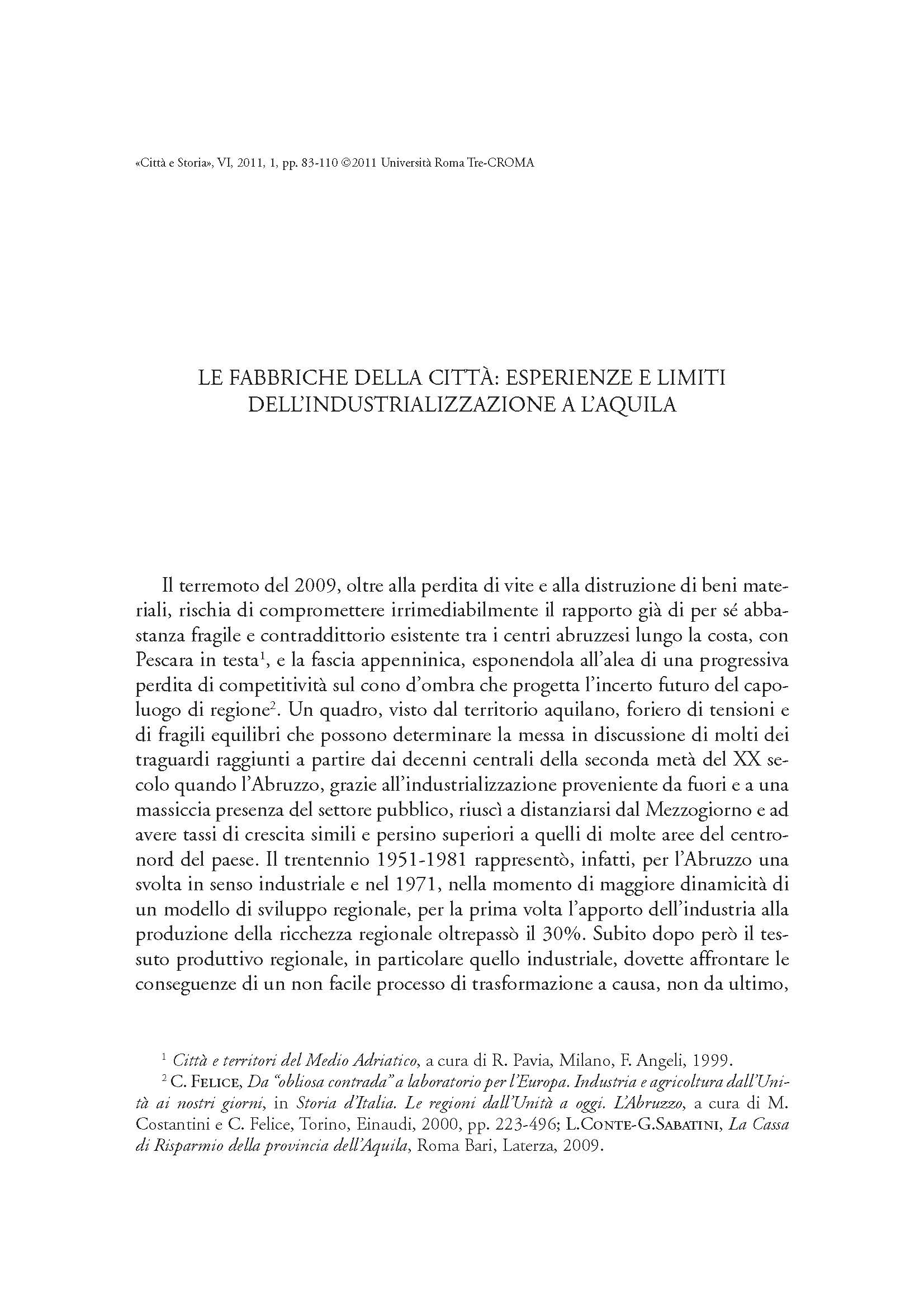Le fabbriche della città: esperienze e limiti dell’industrializzazione a L’Aquila
6,00 €
The industrial presence in the principal city of Abruzzo, its evolution and modifications in the course of its troubled history, is taken as an example of industrialization typical of some southern areas, capable of exerting a significant although limited influence on the local life. The reconstruction begins in the first years of the last century with establishment of the first factory containing all of the distinctive traits that characterized subsequent industrial development: external management, public participation and a relevant female workforce. With the opening of additional plants, the events related to a large factory and its social microcosm make it possible to record the gradual mutation of the local society. While this new social structure marked a significant break with the past, nonetheless the territory failed to fully grasp all of its implications. The very location of the factory outside the city walls is indicative of a relationship with the city that was never definitively concluded. This itinerary reached its conclusion at the end of the second millennium with the escalation of the economic crisis. It was then that the breaking of the large factory into a thousand rivulets uncovered a scenario lacking plan or direction in a fragile economic structure plagued by a high level of unemployment.
The industrial presence in the principal city of Abruzzo, its evolution and modifications in the course of its troubled history, is taken as an example of industrialization typical of some southern areas, capable of exerting a significant although limited influence on the local life. The reconstruction begins in the first years of the last century with establishment of the first factory containing all of the distinctive traits that characterized subsequent industrial development: external management, public participation and a relevant female workforce. With the opening of additional plants, the events related to a large factory and its social microcosm make it possible to record the gradual mutation of the local society. While this new social structure marked a significant break with the past, nonetheless the territory failed to fully grasp all of its implications. The very location of the factory outside the city walls is indicative of a relationship with the city that was never definitively concluded. This itinerary reached its conclusion at the end of the second millennium with the escalation of the economic crisis. It was then that the breaking of the large factory into a thousand rivulets uncovered a scenario lacking plan or direction in a fragile economic structure plagued by a high level of unemployment.

